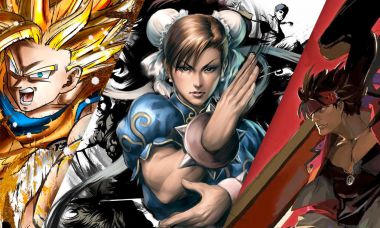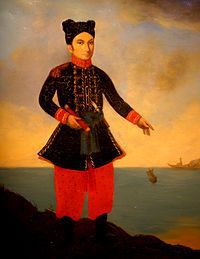The Evolution of Fighting Games

Step into a realm where epic battles unfold, strategy reigns supreme, and iconic characters come to life. Welcome to the world of fighting games, a captivating genre that has evolved throughout the years. From the early days of arcade classics like Street Fighter and Mortal Kombat to the modern era of intense online tournaments and esports, this article explores the thrilling journey of fighting games. Discover the impact they’ve had on popular culture, the art of mastering their intricate mechanics, and the diverse range of characters that have captured our imaginations. Get ready to immerse yourself in the exhilarating world of fighting games, where every move counts and victory awaits those who dare to step into the arena.
The evolution of fighting games
The early years of fighting games
In the early years of fighting games, the genre was dominated by arcade games such as Street Fighter and Mortal Kombat. These games featured simple gameplay mechanics and limited character rosters. They gained popularity due to their competitive nature and the excitement of facing off against friends or strangers in local arcades.
Technological advancements in fighting games
With the advancement of technology, fighting games have evolved significantly. The introduction of 3D graphics and more powerful hardware allowed for more intricate character designs and detailed environments. Games such as Tekken and Virtua Fighter brought a new level of depth to the genre with their use of three-dimensional movement and more complex combat systems.
The rise of online play
Online multiplayer functionality revolutionized the way fighting games are played. Players no longer had to be physically present to compete against each other. Instead, they could connect over the internet and engage in intense battles from the comfort of their own homes. This shift gave rise to online tournaments and communities, contributing to the growth of the competitive scene.
The competitive scene of fighting games
Tournaments and esports
Fighting games have fostered a thriving competitive scene, with tournaments being held worldwide. Events such as the Evolution Championship Series (EVO) and Capcom Cup attract top players from around the globe, showcasing their skills in intense matches. These tournaments offer substantial prize pools and draw large audiences, further solidifying the status of fighting games as esports.
The importance of strategy and skill
Competitive fighting games require a deep understanding of mechanics, strategy, and execution. Players must master precise and complex inputs to perform advanced moves and combos. They also need to anticipate their opponents’ actions, react quickly, and make split-second decisions. The competitive scene celebrates players who can demonstrate exceptional skill and outwit their opponents with well-timed counters and mind games.
The role of the community
The fighting game community plays a crucial role in the development of the competitive scene. Players come together both online and offline to share strategies, discuss character balance, and organize tournaments. The community fosters a supportive environment that encourages newcomers to improve and experienced players to mentor others. This sense of camaraderie has become an integral part of the fighting game experience.
The impact of fighting games on popular culture
Memorable characters
Fighting games have introduced countless iconic characters that have become beloved figures in popular culture. Characters like Ryu from Street Fighter, Sub-Zero from Mortal Kombat, and Tekken’s Heihachi Mishima have transcended the confines of gaming and have become recognizable figures in mainstream media. Their designs, backstories, and moves have made a lasting impact on fans worldwide.
Crossover collaborations
Fighting games have also played a significant role in crossover collaborations, bringing together characters from different franchises. Games like Marvel vs. Capcom and Super Smash Bros. Ultimate have united popular characters from comics, anime, and video games into one epic battle. These collaborations have not only delighted fans of the respective series but also introduced new audiences to previously unfamiliar characters and universes.
Influences on other media
Fighting games have influenced various forms of media, including movies, television shows, and even music videos. The dynamic fight scenes, colorful visuals, and dramatic storylines present in these games provide inspiration for filmmakers, animators, and artists. As a result, elements of fighting game aesthetics and combat choreography have found their way into other mediums, creating a lasting impact on popular culture.
The art of mastering fighting games
Learning the fundamentals
Mastering fighting games requires a solid understanding of the fundamentals. This includes learning basic mechanics such as movement, blocking, and attacking. Players also need to familiarize themselves with frame data, hitboxes, and character-specific techniques. By mastering these basics, players gain a foundation that allows them to execute advanced strategies and adapt to various playstyles.
Training and practice
Becoming proficient in fighting games necessitates dedicated training and practice. This involves spending hours in the training mode, refining execution, practicing combos, and studying matchups. Players often analyze their own gameplay and seek feedback from others to identify areas for improvement. The process of continually honing skills and adapting to new challenges is integral to becoming a master of fighting games.
Adapting to different playstyles
To succeed in competitive fighting games, players must learn to adapt to different playstyles. Each character and player has unique strengths and weaknesses, requiring the ability to adjust strategies on the fly. Adapting to opponents who favor rushdown, zoning, or defensive play requires a deep understanding of the game’s mechanics and exceptional situational awareness.
The diversity of characters in fighting games
Variety of fighting styles
Fighting games offer a diverse range of characters with varied fighting styles. From fast and agile martial artists to heavily armored grapplers, each character provides a distinct gameplay experience. Players can find characters that suit their preferred playstyles, whether it be rushdown, zoning, or a balanced approach. This diversity ensures that players can find a character that resonates with them and allows for a unique gameplay experience.
Representation and inclusivity
Fighting games have made strides in representing diverse backgrounds and experiences. Characters come from various cultures, ethnicities, and genders, helping to create more inclusive gaming spaces. This representation allows players to see themselves reflected in the games and fosters a sense of belonging within the fighting game community.
Character design and storytelling
Fighting games often invest in character design and storytelling, creating memorable and compelling characters. Each character has their own backstory and motivations, adding depth to their portrayal. From tragic heroes seeking revenge to comedic fighters aiming for glory, these narratives provide an additional layer of immersion and engagement for players. The combination of unique fighting styles, diverse backgrounds, and engaging storytelling contributes to the richness of character design in fighting games.
The everlasting impact of the fighting game revolution
Within the depths of virtual battle arenas, the evolution of fighting games has forged a path of excitement, strategy, and camaraderie. From the humble beginnings of arcade brawls to the global stage of esports, these games have left an indelible mark on popular culture. They have introduced us to unforgettable characters who transcend the pixelated realm and become icons cherished by fans worldwide. With its vibrant diversity and inclusivity, coupled with the thrill of mastering complex mechanics, the fighting game genre continues to captivate and inspire. So, grab your controller, step into the arena, and let the world of fighting games unleash your inner warrior. Let the battles begin!
Frequently Asked Questions
1. What are fighting games?
Fighting games are a genre of video games where players control characters who engage in one-on-one combat. These games often involve fast-paced action, strategic moves, and special attacks, and can be played either offline against AI opponents or online against other players.
2. How do I execute special moves in fighting games?
To execute special moves, you typically need to input specific combinations of button presses or joystick movements. Each character usually has a unique set of special moves, such as fireballs, uppercuts, or combos. These moves are usually performed with a combination of directional inputs (like forward, down, or diagonal) and button presses. Practice and experimentation will help you master these moves.
3. What are fighting game tournaments?
Fighting game tournaments are competitive events where players from around the world gather to showcase their skills in their favorite fighting games. These tournaments attract professional players and enthusiasts alike. Players compete against each other in brackets until a champion is determined. Some well-known tournaments include the Evolution Championship Series (EVO) and Capcom Cup.
4. Are there different types of fighting game mechanics?
Yes, fighting games can have various mechanics that differentiate them from one another. Some games may have a focus on footsies, where players strategically use normal attacks and movement to control space. Others might emphasize high-combo potential or rely on unique character-specific abilities. Understanding the mechanics of a particular fighting game is important for mastering its complexities and tactics.
5. Can I play fighting games competitively without attending tournaments?
Absolutely! While tournaments provide a competitive environment, you can still enjoy playing fighting games competitively without participating in formal events. Many fighting games have online ranked matches where you can test your skills against players of similar abilities. Joining online communities, participating in local casual meetups, or even hosting your own friendly competitions can also be great ways to engage with the competitive side of fighting games.




